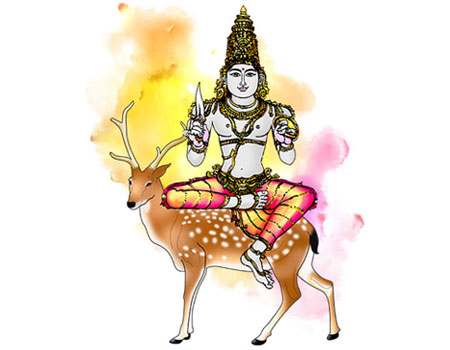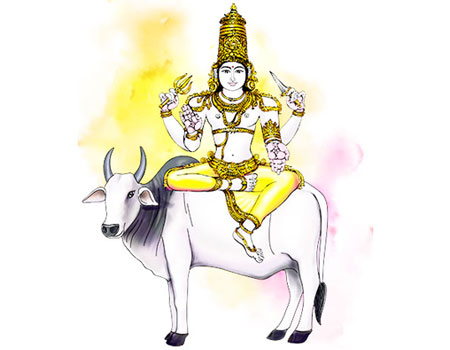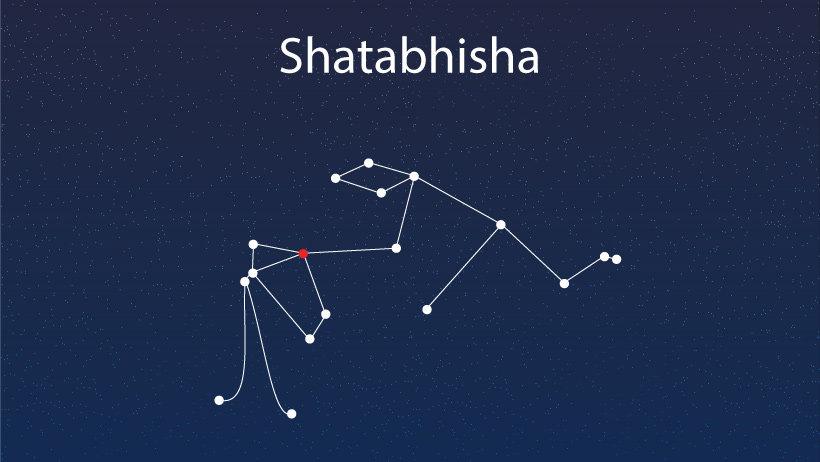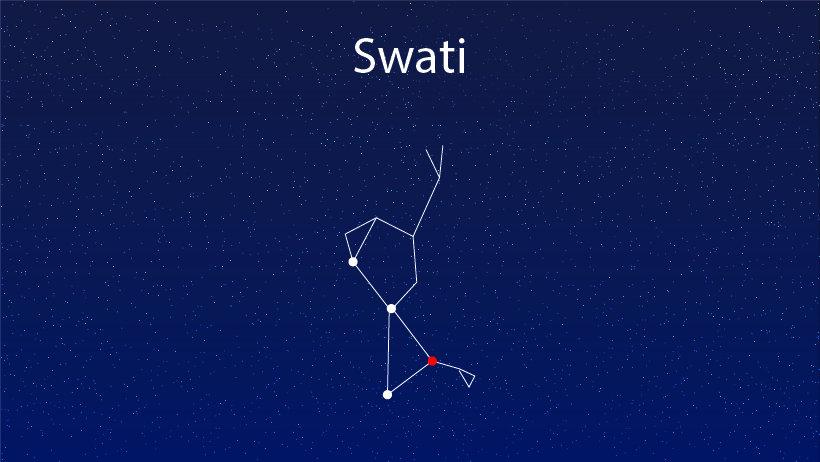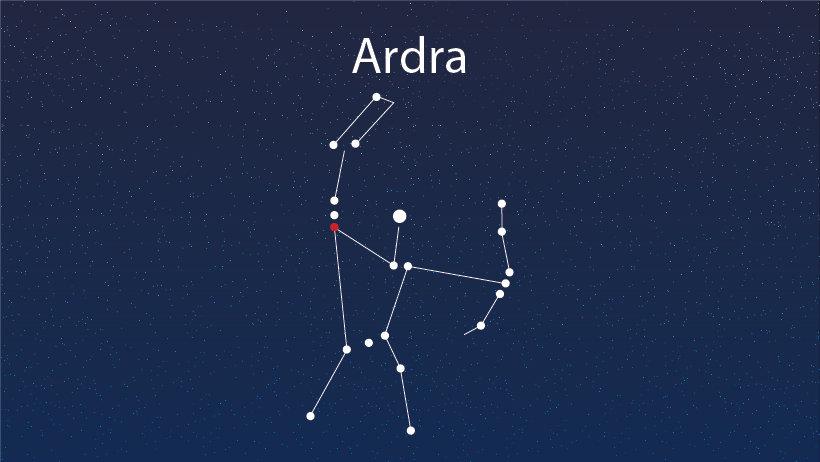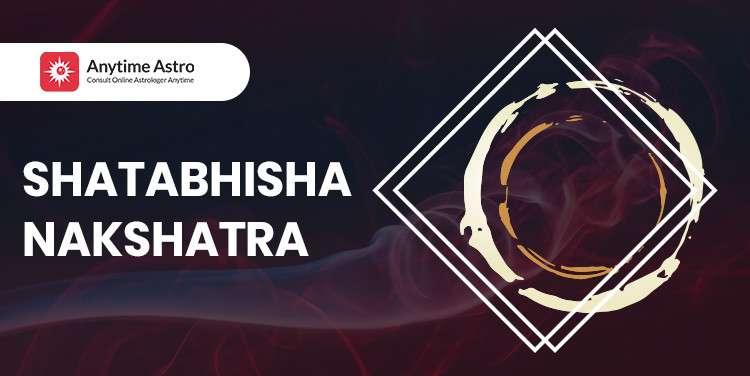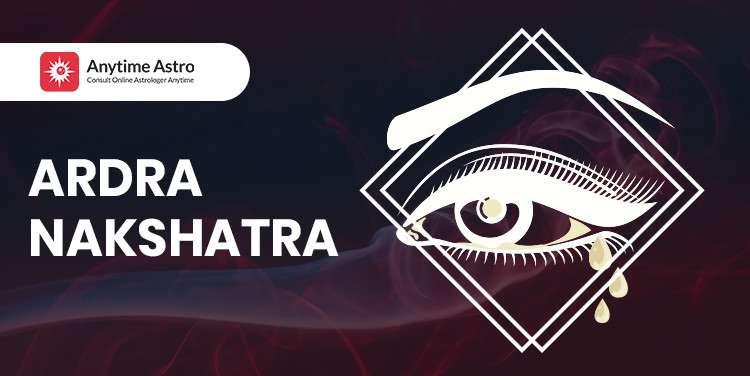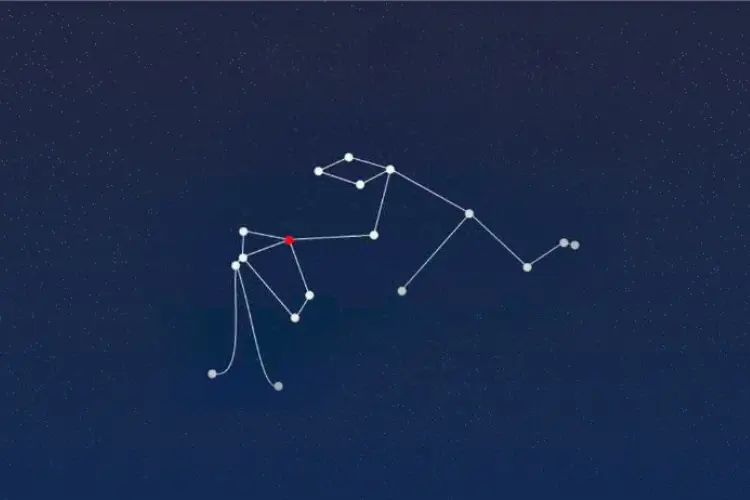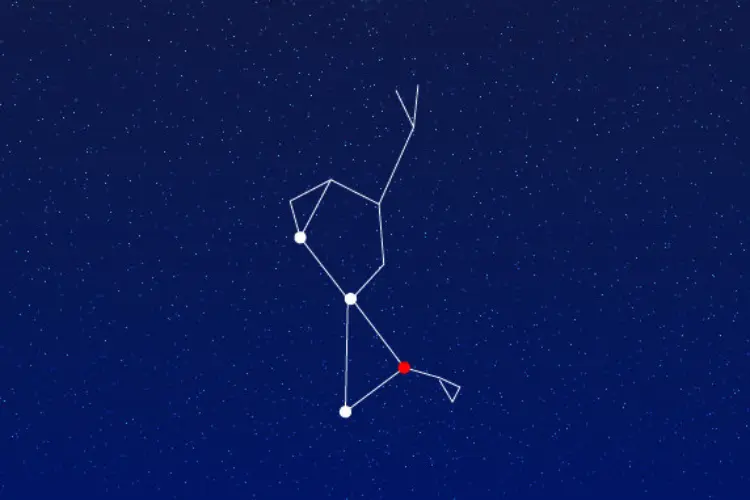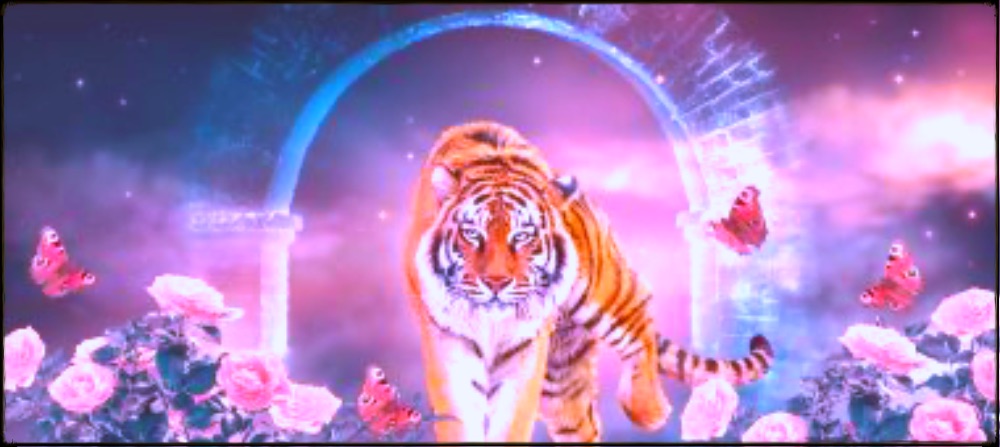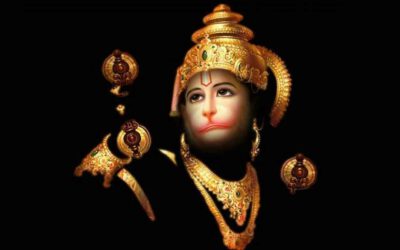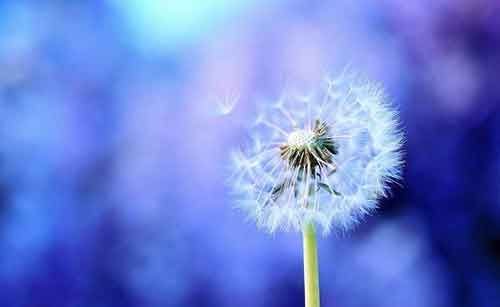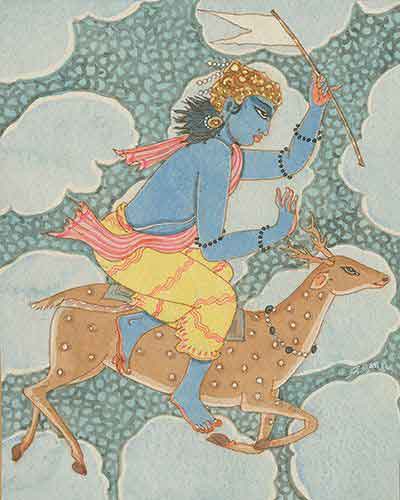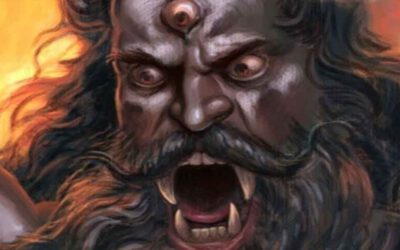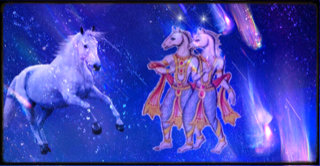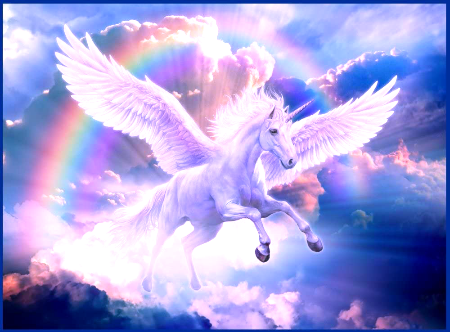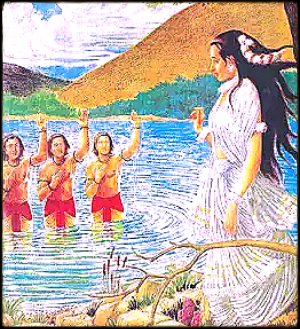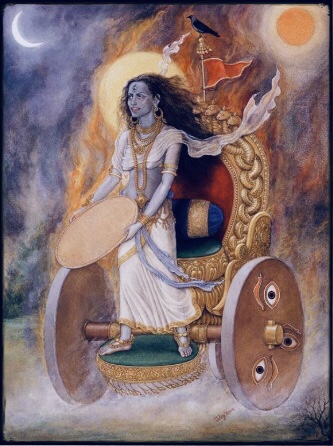#Haay #Navratri Day 8
Ashtami
#Maa #MahaGauri Puja
29th
March 2023
(Wednesday)
Navratri Day 8: #Purple
Day eight of Navratri is the day of Kanjak. The day is celebrated by feeding small girls who are considered to be the avatar of the goddess. The colour signifies the power of intellect and peace. #Goddess Mahagauri is worshipped on this day, who has the power to fulfil all the desires of her devotees. It's said the one who worships this goddess gets relief from all the sufferings in life.
Mahagauri Mata is worshipped on the eighth day of Navratri. Maa Mahagauri is known for fulfilling all the wishes of her devotees. Her name means: Maha’ - great/immense & ‘Gauri’ - white. As she is quite fair in complexion, she got this name ‘Mahagauri’.
About Mahagauri
Goddess Mahagauri has four arms and rides on a bull. One right arm stays in Abhaya Mudra, whereas second one carries the Trishul (trident); and one left arm holds the Damru (a small hand drum), the other one stays in Varada Mudra.
Legend
The tough penance of Maa #Parvati to get Lord #Shiva as her husband hampered her skin. Due to all the calamities of nature, her complexion got black. When Shiva accepted her, he cleaned all the dust and other impurities from her body in the river Ganga. Hence, her real complexion came out, which was extremely white. Therefore, she got this name ‘Maha Gauri’.
Astrological Aspect
Planet #Rahu is ruled by the Mahagauri Maa. Worshipping her helps in pacifying the ill effects of this planet.
Mantras
ॐ देवी महागौर्यै नमः॥
Prarthana Mantra:
श्वेते वृषेसमारूढा श्वेताम्बरधरा शुचिः।
महागौरी शुभं दद्यान्महादेव प्रमोददा॥
Stuti:
या देवी सर्वभूतेषु माँ महागौरी रूपेण संस्थिता।
नमस्तस्यै नमस्तस्यै नमस्तस्यै नमो नमः॥
Dhyana Mantra:
वन्दे वाञ्छित कामार्थे चन्द्रार्धकृतशेखराम्।
सिंहारूढा चतुर्भुजा महागौरी यशस्विनीम्॥
पूर्णन्दु निभाम् गौरी सोमचक्रस्थिताम् अष्टमम् महागौरी त्रिनेत्राम्।
वराभीतिकरां त्रिशूल डमरूधरां महागौरी भजेम्॥
पटाम्बर परिधानां मृदुहास्या नानालङ्कार भूषिताम्।
मञ्जीर, हार, केयूर, किङ्किणि, रत्नकुण्डल मण्डिताम्॥
प्रफुल्ल वन्दना पल्लवाधरां कान्त कपोलाम् त्रैलोक्य मोहनम्।
कमनीयां लावण्यां मृणालां चन्दन गन्धलिप्ताम्॥
Stotra:
सर्वसङ्कट हन्त्री त्वंहि धन ऐश्वर्य प्रदायनीम्।
ज्ञानदा चतुर्वेदमयी महागौरी प्रणमाम्यहम्॥
सुख शान्तिदात्री धन धान्य प्रदायनीम्।
डमरूवाद्य प्रिया अद्या महागौरी प्रणमाम्यहम्॥
त्रैलोक्यमङ्गल त्वंहि तापत्रय हारिणीम्।
वददम् चैतन्यमयी महागौरी प्रणमाम्यहम्॥
Kavacha Mantra:
ॐकारः पातु शीर्षो माँ, हीं बीजम् माँ, हृदयो।
क्लीं बीजम् सदापातु नभो गृहो च पादयो॥
ललाटम् कर्णो हुं बीजम् पातु महागौरी माँ नेत्रम् घ्राणो।
कपोत चिबुको फट् पातु स्वाहा माँ सर्ववदनो॥
With this, we hope that you will make the best of Navratri’s eighth day. May Maha Gauri Mata blesses you with all the goodness of life.
Happy Navratri!
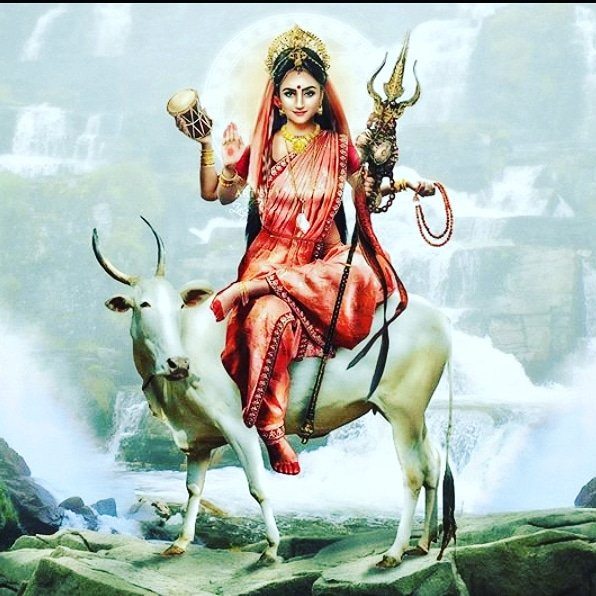
The Eighth Night of #NavRatri is dedicated to MahaGauri – The Great Beauty, The ‘Great White One’ ;
The Ninth Night of NavRatri, to Siddhidhatri – the Bestower of Boons, The Giver of Empowerment.
Both because I am rather late in my finishing of this piece – but also due to a certain underlying thematic unity … it has seemed only appropriate to consider these Two in the course of the same commentary.
Via way of the Hellenic figure of Demeter – for reasons that shall no doubt prove eminently apparent.
One way to think about the procession of the NavaDurgas is that of a ‘progression of opposites’.
Shailaputri [‘Descended from the Mountain’] becomes Brahmacharini [a figure ascending up the Mountain]; Chandraghanta [associated with the Moon] becomes Kushmanda [the power of the Sun]; SkandaMata [a nurturing Mother] becomes Katyayani [the pitiless War Goddess] … and KalaRatri [‘Black Night’] becomes MahaGauri.
In this instance – just as MahaGauri is the Great Fair Beauty, the Lustrous Jewel Radiant ‘Midst the Heavenly Sphere and a Bestower of Blessings and Boons … so too do we often find KalaRatri described in decidedly the opposite terms – as horrifying, indeed an old and decidedly unalluring looking figure. ‘Black’ as opposed to ‘Light’, a Destroyer and Taker rather than a Giver of Grace.
Yet as is so often the case – the simple is as obscurative as it may perhaps seem initially illuminating. For these are not ‘opposites’ – but rather, in each ‘pairing’ we come to observe a fundamental coterminity.
Shailaputri and Brahmacharini are both Aspects dedicated to the movement Upwards toward Her Telos amidst the Mountains – the Reunification with Mahadev. Chandraghanta and Kushmanda both bestow Illumination. SkandaMata and Katyayani are both that which They are in order to successfully vanquish dire demonic threats.
So it is with KalaRatri and MahaGauri.
In our last night’s piece, looking at KaalRatri directly, we sought to deconstruct some of these insistent misperceptions as toward Her. We quoted the scriptural sectors which helped to show Her in an entirely different light – indeed, quite the opposite to what is so often claimed. ( https://aryaakasha.com/2022/04/09/kalaratri-for-chaitra-navratri-the-black-night-of-unveiling-the-night-of-death/ )
We found Kalaratri described quite directly as the most beautiful female in the Three Worlds; we oversaw Her carrying out the roles of Creatrix and Preserver rather than ‘just’ Destructor; and we saw most enviable Boons bequeathed by Her to Her Chosen.
None of which displaces the fact that yes, yes She is also upon other occasions depicted in far less ‘beneficent’ terms elsewhere – occasionally even in the very same scriptures!
In essence – the ‘simple’ becomes the ‘simplistic’. And one must look deeper in order to divine the truth – aided and availed, of course, by those ‘positional’ relationships between the various NavaDurgas as well, rather than endeavouring to consider each figure entirely in isolation.
Something that ought prove impossible – as They are, after all, all expressions of Her.
As applies the progression from KalaRatri to MahaGauri this is particularly the case – as what we find is MahaGauri tending to be hailed as having directly developed from Kali.
How so?
Well, in general terms, what occurs is that the black exterior form to Devi is departed from Her. Either it is simply washed away via the cleansing of a holy river, or it takes on its own existence as Her Shadow, so to speak, or She is calmed and so Her Wrathful Form instead turns to a more pleasant facing.
This is the general typology – it describes quite a number of distinct occurrences wherein Kali, KalaRatri (and yes, these are frequently coterminous or outright co-identified) is mentioned within the scripture.
It also, as it happens, describes parallel occurrences elsewhere within the Indo-European sphere – the Greek figure of Demeter Erinyes (‘The Furious’) / Demeter Melaina (‘The Black’) reverting to Her more usually accustomed ‘Light’ visage being the clear exemplar. Or, in the Second Homeric Hymn, Demeter discarding Her donned appearance as an old woman in order to reveal Her more radiantly apparent Self. We might further surmise that the figure of Skaði having a ‘Shadow’ theonym could point toward a similar understanding.
Indeed, we might go further – observing some additional points of potential underpinning.
In each of these Indo-European myths there is often a Separation and/or Antagonism between the Sky Father and His Wife. The Homeric Hymnal aforementioned pointedly and repeatedly has Demeter being rather annoyed with Zeus – just as several of the situations in which the darkened complexion of Devi is involved do likewise feature some animosity toward Shiva over the incident.
And most definitely as the ‘Separation’ between Husband and Wife is a theme occurrent in both cases – albeit in rather ‘twisted’ fashion in the Greek, due to the complexities involved viz. Persephone and Her Cyclical exiling from Hades.
Although we should probably add via way of brief clarification – that what I perceive to have occurred viz. Demeter and Persephone is that an originally singular Goddess has somehow become in narrative rendering a Mother and a Daughter. We can tell this, in part, due to those Greek myths wherein multiple iterations of the same occurrence are told … with Demeter carrying out the role in one of these, Persephone in the other – the Mothering of Dionysus via Zeus, for example.
It should seem rather likely that, as we may perhaps observe elsewhere, the ’emanation’ or ‘expression’ of another Form of the Goddess – Devi separating out Her Kali ‘skin’ into a seemingly ‘independent’ figure (that is, in truth, another Form or Aspect of Her) perhaps finding an analogous presentation in Demeter having a Form that is ‘Descended’ of Her in similar manner. But the figurative nature of the ‘Daughter’ relationship becoming steadily eroded with time.
The situation of Skadi’s cyclical half-and-half separation between two Realms (one of these, pointedly, being the Mountains) should seem to suggest we are on the right track here.
And certainly, in the Shiva Purana (VII 1 25 45-46), Devi’s emanation of Her ‘Sheath’ or ‘Skin’ in order to bestow Death – is directly referred to as Her having produced a ‘Daughter’.
Although we must also consider another and even more archaic mythic occurrence to make further sense of the situation.
That is RV X 17 – wherein we find the Wife of the Wide-Shining One (Vivasvan) to disappear from He; Saranyu (the Wife in question) being replaced by … well, at this point it becomes a rather curious question of translation.
My own personal interpretation is that the replacement by “One like Her” is not the full picture – and that ‘Sa-Varna’ has been misinterpreted. That is to say – Saranyu is not replaced by a figure of the ‘Same Colour’ … but rather, by a figure of the ‘Same Quality’, ‘Same Essence’.
To briefly set out some important points of clarification – it is our position that the Surya Vivasvan referred to in RV X 17 is the Sky Father deific. Which we believe for a number of reasons, including the direct concordancy of key elements of the relevant myth (preserved in its later Puranic expressions) with two presentations for the Classical sphere – Poseidon and Demeter Erinyes (Whom we have met earlier …), and Zeus and Nemesis (another ‘Darkened’ figure). We have set out the reasoning, especially for the latter, in several pieces, and shall not seek to repeat such here.
(See, for instance – https://aryaakasha.com/2020/11/07/the-black-avenging-form-of-the-earth-mother-and-the-pursuits-of-the-sky-father-as-solar-horseman-a-comparative-indo-european-typological-evocation-part-one-demeter-erinyes-poseidon/ ; https://aryaakasha.com/2020/11/13/the-black-avenging-form-of-the-earth-mother-and-the-pursuits-of-the-sky-father-as-solar-horseman-a-comparative-indo-european-typological-evocation-part-two-surya-saranyu-and-chhaya-the-shadowy/ )
But what we would seek to draw attention to – is the circumstance wherein in the Puranic era presentation of the mythology, this counterpart form to Saranyu is hailed as Chhaya (or Chaya).
What might ‘Chhaya’ mean, one wonders …
“Shadow”.
Now, again, we have a situation wherein in the subsequent mythology, the distinction between the ‘Shade’ facing and the ‘Light’ facing are perhaps arguably over-emphasized. Various of the Puranic accounts do not agree upon which of the Children of Surya are born to which of these Forms of the Mother, for a start. And the circumstance of Goddess and the Shadow of the Goddess being, well, a shadow – a darkened projection that is of the same essence (Sa-Varna) in this case, a darkened visage perhaps – has become depicted instead as the Shadow being the Sister of the Sauri Devi.
As we had said – the Greek mythology with its presentation of Mother and Daughter might be running upon a similar ‘literalization’ formula which turns complex metaphysical notions of Aspects and Emanations into relatively simple (simplistic) and straightforward instantly familiar familial dynamics.
Yet we are, perhaps, digressing somewhat from our consideration for MahaGauri. Albeit only briefly in terms of distance.
For that ‘Sauri’ theonymic I had deployed there is a rather pointed one. It is ‘Solar’ – and we have long observed the archaic Indo-European world-view appears to hold the Sun and Solar conceptry to stand also for great, eminent Beauty. Consider Helen of Troy, a Goddess (and still worshipped as such by Sparta even into the Classical Age) and Solar via linguistics; or Her Hindu counterpart – Tapati (the name, from the same root as English ‘Tepid’, pertains to the ‘Warmth’ and ‘Radiance’ of the Sun).
We are therefore utterly unsurprised to find such prominent Solar, Stellar, Celestial conceptry deployed to eulogize MahaGauri.
So, for instance, in the Tantrika hymnal of the Bhairavistotra (sung, as one would expect, by Bhairava – although interestingly, to the Goddess as within the Lingam) found in the Srimatottara, we have –
“Victory! Victory (to You) O Goddess (Bhagavatī)!
(You) Who are like the solar orb of the emergence of Supreme Reality!
(You Who are) the star that is the circle of all the directions illumined by the halo of the light of Your Own body!
O plane of stability!
(You Whose) body of enjoyment (saˆbhogadeha) is radiant white (svacchā) and unlimited in all (its) limbs!
O Mahāgaurī (Great White One) !”
If we were to incorporate the various ‘Gauri’ citations for Devi within the Puranic canon there are further attestations to be drawn from; although it should be noted that some of these are for ‘lightning’ rather than ‘solar light’, and in other cases (as with, for instance ‘SvarnaGauri’), there is a pointedly ‘Gold’ saliency that is implicitly Solar yet nevertheless also potentially ‘freestanding’.
One example of the ‘implicit’ Solar conceptry should come to us via the Shiva Purana’s detailing of the situation of Devi following the ‘Sheathing’ (or, we should say, the opposite – the ‘Unsheathing’, the ‘Emanation’, the ‘Drawing’ Out) of Kaushiki (another Black Wrathful Form). Therein, we find that the detachment of the Black exterior reveals a radiant inner figure.
In any case, we can certainly echo the words of Devi in the Lalita Mahatmya (40 106, Tagare translation) –
“To My right is seated Mahāgaurī born of My Eyes. She is the utmost limit of the essence of beauty.”
The text then goes on to add this vitally important (although easily misapprehended) element –
“She is stationed there in the form of Mahālakṣmī or in the form of a Kṛtyā”, which we shall expand upon in due course.
Yet how does any of this help us to more truly ‘unpack’ and ‘explicate’ the meaning of the Form?
What do we find underpinning all of this? Is it ‘merely’ incredible, incandescent Beauty? ‘Light’ and ‘Illumination’ alone?
Of course not.
We had considered at far grander length various of the approaches to MahaGauri in our previous (Sharada) Navratri piece –
( https://aryaakasha.com/2019/10/06/mahagauri-the-eighth-night-of-navratri-eighth-of-the-navadurgas-2/ )
We shall not seek to reproduce all of that (considerable) swathe of material here.
However, what we WILL note is that, as we had stated towards the outset of this piece –
The situation of understanding the NavaDurgas is one wherein each must be considered ‘in context’ as well as to some extent ‘individually’.
KalaRatri, we can most definitely consider – and, indeed, did consider – in somewhat ‘freestanding’ format in this regard. As, while one could approach Her as the blacker, angrier form that develops from Katyayani in the similar fashion to Kali from Durga in the more general typology … that would not facilitate our examination of Her in that truly immensely ‘broad’ cosmological salience. Analyzing Her as ‘Death’ , ‘Darkness’, ‘Destruction’, would be accurate, yet severely incomplete – as we showed at some length therein.
The ‘Context’, such as it is, is the ‘Positional’ relationship between the NavaDurgas – and in this case, it is most definitely an instance of ‘Darkness’ preceding ‘Light’.
Yet that is the thing – the underlying Goddess, the underlying Energy ((Adi) Shakti), is entirely artificial to distinguish in ultimate terms of Essence. Although nevertheless useful to be able to functionally approach in different ‘format’, and with some key points of surface-level distinction between Them.
There are three heavily interleavened elements, I believe, to some of the major significance of the MahaGauri Form, and even the broader Indo-European typology to which this links.
To explicate this, we turn to an instance from the Shiva Purana (VII 1 26, Shastri translation):
“23 Thus requested by Brahmā after duly reminding Her of Her great aspect the Goddess ceased from Her penance.
24-29 Then taking leave of the Goddess Brahmā vanished. The Goddess visited Her parents Menā, Himavat. She bowed to them and alleviated the pangs of Her parents due to Her absence. The Goddess then proceeded to Mandara talking to Her friends about the trees in the penance-grove who had been Her loving companions. “They are shedding tears due to their grief at separation, by their scattering flowers, they are crying in distress by the chirping sound of birds seated on their boughs.” The Goddess was impatient to see Her lord. She kept the tiger ahead thinking him as son born of Herself, out of affection. With the brilliant lustre of Her body She illuminated the quarters. Thus Gaurī reached Mandara where lord Śiva was staying—the Lord Who is the creator, protector and annihilator of the worlds.”
Now we have begun our quotation at that point, rather than the earlier and emphatic statements of the Omnipotence of Devi – “Without [Whom] Rites cannot achieve Results” – for a particular purpose. Namely, that brief mentioning of Devi Herself having been undertaking … “penance” is not a good translation, neither is ‘austerities’, to my mind – Devotions, perhaps, or some other such fitting concept. It has continually amazed me that the closest labelling we seem to have in much of the West for what is known there in the Hindu perspective is an act of (self-directed) punishment – not ‘Service’, nor ‘Self-Cultivation’ or ‘Self Development’; and which, when rendered as ‘Austerities’ focuses so much upon an ‘outer’ correlate of heavy devotional contemplation (its intense focus removing it from much of the world and worldly pleasures as distractions, whilst putting the undertaker through quite some testing circumstances also in various other ways to harden they like the proverbial diamond). But I digress.
The reasoning for this is because, as we have often observed, the situation of various religious acts in the Indo-European world view is one of ‘Mythic Recurrence’ – the taking up of a pattern found eminently within the Myth. And often, for enhanced impetus, a pattern that is not just found within the Myth – but initially engaged in by Gods and then re-enacted as a deliberate and focused ‘resonancy’ entirely interior to said Myth. We are, as it were, completing the ‘third’ phase of it through our continued emanation of the original and secondary principles down here amidst us. And what is said Three Times, after all, is True. !
So – here we find that Devi has undertaken extended ‘Devotions’ in order to attain a Boon. Alongside this, curiously enough, a Tiger has shown up in the course of Devi’s undertakings and has, through Her Grace, gone from wishing to devour what had appeared to be a woman alone and at prayer (i.e. rather distracted), through to wishing to serve Her and protect Her from interruption by other denizens of the forest. This, too, is referred to by Devi (in the course of Her conversation with Lord Brahma) as being an instance of somebody undertaking Devotions toward Her – and for which a Boon shall indeed be bestowed !
Amusingly, this eventually sets up an instance that, to paraphrase in terms of modern cliches (always a risky thing to do !) , when Devi eventually does return Home to Kailash once She has made Her Point to Lord Shiva via Her Absence … She is accompanied by this great intimidating Tiger, and effectively asks Her Husband “Can We keep him?” ‘Potnia Theron’, indeed !
However, for our broader cosmological point (and that of the comparative mytho-theology) – it is necessary to observe another set of (entirely related) principles.
First and foremost, as Brahma Himself observes –
“What can a man of virtuous rites achieve without depending on Your behest? You alone are the unborn, intelligent, ancient Goddess. […] There is no greater Śakti than You. Without You rites cannot achieve results.
You alone constitute Śakti of living beings. Himself incompetent to do anything [without Your empowerment] what will a mere agent do?
It is only Your behest that is the cause of acquisition of prosperity and glory by Viṣṇu, by Me or by any of these—Gods, Dānavas or Rākṣasas. […]
O Goddess of the Gods without propitiating You the fourfold arms of life cannot be acquired by all of Us. […]
You are the primordial and eternal Śakti of Śiva the great soul, the lord of the universe, the Śakti without beginning, middle or death.
For the functioning of the universe You assume some form or other and play about in different aspects. Who knows you factually?
Hence let this wicked tiger (vyāghra) too attain the great Siddhi by Your blessings. Nothing can prevent it”
(Shastri translation)
Now, how does this pertain to that which we are seeking to sketch out here?
Consider the situation that prevails upon this Earth when Demeter withdraws Her Blessing. It is a circumstance wherein, per various of the Classical comparanda, She might fairly be described as rather wroth toward certain male God(s) (specifically, Hades, Poseidon, and Zeus – dependent upon the telling). And what results?
Famine. Well .. Death, we may say – and how does this ensue? Due to the ’empowerment’ of the Goddess no longer being present within the natural world to bring about the flourishing of life.
The description given in the Second Homeric Hymn phrases it thusly:
“But golden-haired Demeter sat there apart from all the blessed Gods and stayed, wasting with yearning for Her deep-bosomed Daughter. Then She caused a most dreadful and cruel year for mankind over the all-nourishing earth: the ground would not make the seed sprout, for rich-crowned Demeter kept it hid. In the fields the oxen drew many a curved plough in vain, and much white barley was cast upon the land without avail. So She would have destroyed the whole race of man with cruel famine and have robbed Them who dwell on Olympus of Their glorious right of gifts and sacrifices, had not Zeus perceived and marked this in His heart. First He sent golden-winged Iris to call rich-haired Demeter, lovely in form. So He commanded. And She obeyed the dark-clouded Son of Cronos, and sped with swift feet across the space between. She came to the stronghold of fragrant Eleusis, and there finding dark-cloaked Demeter in Her temple, spake to Her and uttered winged words: “Demeter, Father Zeus, Whose wisdom is everlasting, calls You to come join the tribes of the eternal Gods: come therefore, and let not the message I bring from Zeus pass unobeyed.”
Thus said Iris imploring Her. But Demeter’s heart was not moved. Then again the Father sent forth all the blessed and eternal Gods besides: and They came, One after the Other, and kept calling Her and offering many very beautiful gifts and whatever right She might be pleased to choose among the deathless Gods. Yet no One was able to persuade Her mind and will, so wrath was She in Her heart; but She stubbornly rejected all their words: for She vowed that She would never set foot on fragrant Olympus nor let fruit spring out of the ground, until She beheld with Her Eyes Her own fair-faced Daughter.”
(Evelyn-White translation)
Earlier in the Hymnal we also find the following –
“But grief yet more terrible and savage came into the heart of Demeter, and thereafter She was so angered with the dark-clouded Son of Cronos that She avoided the gathering of the Gods and high Olympus, and went to the towns and rich fields of men, disfiguring Her Form a long while. And no one of men or deep-bosomed women knew Her when they saw Her, until She came to the house of wise Celeus who then was lord of fragrant Eleusis. Vexed in Her dear heart, She sat near the wayside by the Maiden Well, from which the women of the place were used to draw water, in a shady place over which grew an olive shrub. And She was like an ancient woman who is cut off from childbearing and the gifts of garland-loving Aphrodite, like the nurses of king’s children who deal justice, or like the house-keepers in their echoing halls.”
(Evelyn-White translation)
To phrase it more succinctly – we have Demeter variously described in terms that are ‘Black(ened)’, that are ‘Shrouded’ or ‘Cloaked’, and that of a rather prominently aged old woman. If we cast our minds back to some of the descriptive conceptry for Kali / KaalRatri – we find that these are close matches.
What is also a close match is that notion of a generally pervasive Death. Which, as we can see, is the result of Her withholding Her ’empowerment’ – Her ‘Shakti’ to the otherwise-fertile earth.
And even though Zeus Himself commands Her through various approaches, even He cannot secure Her to do the vital thing to make the land bloom, and enable life itself to continue.
Nor can, it would seem, Zeus carry out the relevant undertakings Himself – as otherwise potent as He might so happen to be. Even the Rites carried out by Men to attempt to secure the revitalization of the earth bear – literally – no fruit in Her absence of engagement.
What can change the situation? Only granting what She demands.
At which point, as we have seen, the ‘dark’ visage and mytho-literal cloak fall away to reveal a beautifully radiant, ‘fair’ Goddess.
There is a ‘presaging’ of this earlier in that same Homeric Hymn, when She reveals Herself to Queen Metaneira:
“When she had so said, the goddess changed her stature and her looks, thrusting old age away from her: beauty spread round about her and a lovely fragrance was wafted from her sweet-smelling robes, and from the divine body of the goddess a light shone afar, while golden tresses spread down over her shoulders, so that the strong house was filled with brightness as with lightning.”
(Evelyn-White translation)
Another presentation of the same underlying Indo-European myth (albeit with some different manifest particulars) is that found in Pausanias:
“At first, they say, Demeter was angry at what had happened, but later on She laid aside Her Wrath and wished to bathe in the Ladon. So the Goddess has obtained two surnames, Erinys (Fury) because of Her avenging anger, because the Arkadians call being wrathful ‘being furious,’ and Lousie (Bather) because She bathed in the Ladon.”
(Jones translation)
Again – if we recall the situation of Kali / KaalRatri, we find that She undertakes to bathe in order to remove Her Black and Furious state – and thus become the ‘Golden’, ‘Light’, in a word, ‘MahaGauri’ Form once more.
We may figuratively suggest that the (Dark) Kali Form presiding over desolation and death, returning to the ‘implicit’ rather than ‘actively prominent’ phase through Devi’s bathing – is also a symbolic representation for the dessicated state of the world being brought to an end through the appropriate conduct. The ‘re-activation’ for the Shakti in the life-giving (rather than death-dealing) and positive sense. [Although we must, of course, emphasize that elsewhere in the Shakta scriptural corpus, we find support for Kali Herself also having just such a life-bestowing role; and, further, that the representation for Death is more of a ‘necessary thing’ meted out against those figures (the demon-lords, usually) that are actually responsible for the ecological crisis in question through general disruption of the cosmic laws as best as they are able.]
In the context of the Demeter-Persephone narrative, it is tempting to speculate that in a certain sense, Demeter becoming reunited with Persephone is a case of Her (re-discovering) some temporarily suppressed or detached element to Her True Nature. And therefore, that is partially why the Earth is thence allowed to bloom again – and why Demeter no longer feels so woe-strickenly ‘incomplete’.
‘Atonement’, we might suggest – in its true etymological sense of ‘At-One-Ment’ … the state or situation of being made One and Whole once more.
So – as we have said: the situation of MahaGauri as a Bestower of Boons is one that is best considered ‘contextually’. The ‘Empowerments’, the Gifts, the Siddhis, even – these are received following devotional efforts undertaken to propitiate Her.
Curiously, as we have seen, in the course of the Shiva Purana’s accounting (VII 1 34-35, Shastri translation) – this also applies to Her, evidently, carrying out acts of devotion to Herself:
“Brahmā said:—
34 O Goddess, why did You perform a severe penance for this purpose? Was not Your Wish alone sufficient for that? Indeed this is only Your sport
35 O Mother of the Universe, Your play too benefits the Worlds. Hence some benefit pleasing to Me may be sought through it.”
That benefit, as it happens, is Her fixing one of His … questionable (yet predictable) actions –
“36 Two Daityas, Śumbha and Niśumbha to whom I had granted boons have turned arrogant. They are harassing the Gods. Their destruction is only through You.
37 Do not delay. For a short while be steady. The Śakti that is to be released now shall be their death.
38 Thus requested by Brahmā, the Goddess, Daughter of the Mountain, cast off Her outer skin and became white.
39 The outer sheath thus cast off became Kauśikī Who is known as Kālī, the virgin with the lustre of the black cloud.”
Now there is much more which we could say upon this exchange between Brahma and Devi (in particular how Devi’s reply to Brahma is a subtly communicated point about how Her reasons are Her Own and somewhat ineffable … which Brahma then immediately appears to apprehend as Her noting that She has undertaken the ‘penance’ in this manner precisely so that there ‘just happens’ to be a ‘sloughed off’ Darkened Form of Her available at just the right time where such a figure is called for – something that would not have occurred had She simply taken the more ‘direct’ route and with a snap of Her Fingers changed colouration, etc.), but we ought move back to the main thrust of our positioning.
The situation of this ‘reconciliation’, ‘atonement’, whatever we wish to call it – it sets the stage for the world to once again be nourishing and life-bearing. How and why? Because the Goddess has Willed It To Be So. And, perhaps, slain some troublesome demon-lords that have sought to suppress the natural order of things and correspondingly thrown the ecological world out of whack (viz. the situation of Durgamasur as my usual go-to exemplar here – particularly due to his slaying at the hands and twanging bowstring of Shakambhari Devi ! ).
In essence – the ‘Shakti’ of the World, of the natural world, plants, and life, and weather : it has become (re-)activated, and is therefore empowered to do what it is there to in Her Blessed Hands and Mouth and Mind.
This is partially what had been entailed via that ‘Kritya’ hailing we had aforementioned from the Lalita Mahatmya. Which, as we have said, is an easily misapprehended purport. Here, we take it to mean not the semi-demonic female figure that is often thought of – but rather, it is the more direct meaning to the term. Which, to be sure, does heavily underpin the other usage aforementioned.
Kritya ( कृत्य – also anglicized as ‘Krtya’, or ‘kṛtya’ if we are being proper) effectively means ‘Action’; and is from the same ultimate root (Sanskrit ‘Kr’ ( कृ ) – referring to ‘doing’ or ‘making’; itself from PIE *kʷer- that means likewise) as ‘Karma’, etc. or ‘Karman’ (both of which pertain ultimately to ‘action’ undertaken). We mention it here as ‘Krityaa’ ( कृत्या – kṛtyā ) is the relevant term for the aforementioned feminine spirit. Most usually encountered as the ‘vector’ or the ‘bearer’ for a malevolent spell. The idea in the relevant Vedic metaphysics is that when the cursing spell is completed, it comes forth and then ‘seeks out’ the target – taking the form, often, of a female beast of prey which then ‘hunts down’ the quarry to unleash its impact. There is also a more specific ‘Krityaa’ that occurs as a particular feminine form associated with the ‘absorbing’ of potential curses against a newlywed bride, and with a complexion the blue and red colour of a bloodied sunset sky, and with particular connexion to a sort of ‘impurity’ that has been indeed sloughed off by the bride. However I am digressing.
The point is quite a simple one: ‘Krityaa’ does not only refer to the specific form of female spirit that is the ‘enaction’ of curse-actions. But can evidently also pertain to the more generalized notion of a (feminine) ‘enactor’ or ‘executor’ for other styles of metaphysical potency and invocation as well.
And so we are unsurprised to note the statement in the aforementioned Lalita Mahatmya: that MahaGauri is “the utmost limit of the essence of beauty”, “born of [Devi’s] Eyes” (and we would observe that as the Eyes of the Sky Father often correlate to the Sun etc. … so, too, perhaps, might the Eyes of His Wife), and “stationed there in the form of Mahālakṣmī or in the form of a Kṛtyā”.
This understanding operates, as does much of the Shakta canon (and, indeed, just about any major Hindu textual corpus), upon multiple levels. In the context it’s directly drawn from, it can be read as specifically pertaining to MahaGauri acting as an ‘enactor’ to the Will of Devi – poised to reward the propitiation of the king Dasaratha who has approached Her to beseech Her Aid and Blessing with a particular matrimonial boon.
Yet it may also be read as a far broader and more underlying cosmological point – of which the above-aforementioned is a specific manifestation or occurrence. As it is not only the ‘enaction’ of the requests of mortals, the culmination-into-active-expression of mantras and rites carried out unto Her (and we recall the words of Brahma in the course of the Shiva Purana sections quoted above about the fruitlessness – evidently in multiple senses – of Rites without Her involvement and active approval … something that is a clear resonancy with the more archaic Vedic theology pertaining to Vak Devi, as we have discussed at quite some length elsewhere).
But is also the ‘activator’ or ‘executor’ for these more transcendentally impelled processes as well.
So, the ‘Great Enactor’ of the Universe. The One Who brings to fruition (both figuratively, and it should seem – literally) of the ‘potentia’ inherent within everything, as needed.
All of which, of course, brings us to the Ninth and Last of the NavaDurgas – Siddhidhatri.
( our previous and much lengthier commentary toward Her can be found here – https://aryaakasha.com/2019/10/07/siddhidhatri-the-final-night-ninth-of-the-navadurgas/ )
Siddhidhatri is often (and not incorrectly) rendered as ‘Bestower’ (Dhatri – ‘Dative’, ‘Donation’, etc.) ‘of Boons’ or ‘Empowerments’ (Siddhis). However, this can also be approached as ‘The Perfector’.
It is in this latter sense that ‘Siddhi’ as ‘Cooking’ or a ‘Work of Art’ is intended. And hence, the idea of a ‘work in progress’ (which, surely, the Universe also is), being brought to its highest state of realization. Those ‘potentials’ inherent within the seed being impelled and empowered to grow – but also, that ’empowerment’, that potential placed within the seed in the first instance (the ‘donation’ of the ‘Siddhi’). As with the rest of the universe itself.
After all, as Adi Shankara phrased it in his Saundarya Lahari [‘The Waves of Beauty’] –
“sivah saktya yukto yadi bhavati saktah prabhavitum
na cedevam devo na khalu kusalah spanditumapi”
Or, phrased in a language we can perhaps grasp somewhat better (most of here in the audience, anyway) –
“Shiva with Shakti joined (Yukta), if (Yadi) comes to be (Bhavati) empowered / endowed with (Sakta) is able to influence / manifest / effect (Prabhavitum)
If Without (Na Cet), the God (Devo) is indeed (Khalu) not capable / competent (Kusala) even (Api) to ‘pulsate’ / ‘move’ / ‘engage in mental activity’ (Spanditum) .”
Putting this into a more straightforward-for-English approach:
“If Shiva is joined with His Shakti, then He becomes empowered to Manifest and Impel the Universe
But without Her, Even the Mighty God is indeed unable to even Move nor Mentally Conceive”
Various translations have chosen – quite understandably – to render particulars of the above rather more ‘figuratively’ than I have done here.
So, for instance, it is the ‘Lordship’ of the Universe that is referred to ; or the ‘Stirring’ of motion and activity (mental, metaphysical, or otherwise) – which is rather useful, as we are aware of Shiva as Purusha (i.e. the Universe – Matter) … in fact being Shiva as ‘Shava’, that is to say the ‘Corpse’ (beneath Kali’s feet) prior to Her investiture of Life into Him.
Hence, that idea of the ‘corpse’ ‘stirring’ to life – and we would note the PIE *h₃er- – to ‘rise up’, to ‘stir up’, and yes, ‘to fight’; that has a likely expression also in the ‘Erinyes’ of ‘Demeter Erinyes’, or various other epithets and theonymics quite salient to our purpose here.
If we are to conceptualize the Universe as a ‘Body’ – then without Her, it is a Body not in motion. It is static, it is still, it is suspended and stopped. Indeed, we may go back steps further and note that it is a body that is not even extant to be in such a frame.
If we are to conceptualize the Universe and its unfurling as a Dream, a Vision – the ‘mental activity’ we had spoken upon earlier – then without Her, even Lord Shiva is unable to Dream, to experience and then actively bring to immanentize, His Vision.
Or, we may say – Her Dream, Her Vision – the one that She had Inspired Him to express !
It is a good thing, then, that She never truly leaves Him – not for too long, anyway.
His Shakti is always there – it is just simply a matter of divining how to reach out to Her again.
जय माता दी ॥

